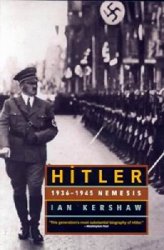Mexican Americans faced many obstacles from 1929 to 1945. The Great Depression worsened their economic condition and intensified mistrust and resentment of them, particularly in the southwestern states. World War II then brought change and new opportunities, but it sometimes exacerbated tensions as well.
There had long been a substantial Hispanic population in the United States, with the annexation of the Southwest from Mexico in the mid-19th century. But the beginning of the 20th century witnessed a surge in Mexican immigration. The search for economic opportunities accounted for most of the migration, first in railroad jobs, then as agricultural laborers by the 1910s. Roughly 500,000 Mexicans immigrated to the United States during the 1920s (Mexico was exempt from the stringent immigration quotas of the decade), and thousands more immigrated illegally during the decade as well. Settling mainly in the Southwest, especially in California and Texas, the Mexican-American population also began to migrate to cities in California and the industrial Midwest. By 1930, Mexican Americans comprised about one-fifth of the population of Los Angeles, while their numbers in Chicago had grown from just over 3,000 in 1920 to almost 20,000 in 1930. The Mexican-American population in 1930 was at least 1.5 million people.
Overall, Mexican Americans remained undereducated and poor. In 1930, most were employed in unskilled jobs, with agriculture accounting for the largest occupational category (40 percent, with only 10 percent of Mexican Americans as farm owners). Manufacturing jobs in urban areas accounted for about 20 percent of Mexican-American employment in 1930. Among women, domestic service employed nearly half the workers, while one-fifth worked as agricultural laborers. Mexican Americans’ religion set them apart not only from the larger Protestant majority but from other Catholics as well, for the Catholic Church ignored the language barrier by appointing priests and bishops who did not speak Spanish and disdained Mexican Catholic traditions.
The scarcity of jobs during the 1930s heightened suspicion and resentment toward Mexican Americans, who were often assumed to be illegal immigrants and were accused of taking jobs and draining local RELIEE rolls. Mexican officials, who needed unskilled agricultural labor, and U. S. local, state, and the federal government officials encouraged migration back to Mexico in the Mexican Repatriation Program. From 1929 to 1940, an estimated half million Mexican Americans were sent to Mexico, as many as half of them born in the United States or were legal residents. The pace of the repatriation slowed by the mid-1930s, but the experience contributed to Mexican Americans’ suspicions of Anglo-Americans for decades, and Mexican immigration to the United States dropped dramatically, to only about 30,000, in the 1930s.
For the Mexican Americans who remained, the Great Depression exacerbated their conditions. Living for the most part in rural or urban barrios, often in poor conditions, they experienced an unemployment rate consistently higher than for most groups. The migration of other Americans to California, such as those escaping the dust bowl, increased the pool of agricultural workers, and Mexican Americans there found themselves losing jobs to the new arrivals. But they remained a significant number of the underpaid agricultural workforce, and Mexican Americans were leaders in the attempts to organize labor unions and force farm owners to pay higher wages and provide better working conditions. By the early 1930s there were about 40 agricultural unions in California, with the largest the Confederation of Mexican Farm Workers’ and Laborers’ Union, consisting of 50 locals and
5.000 members. But with jobs scarce, competition from new migrants, and farm owners’ stiff resistance to unionization, wages, hours and conditions did not improve significantly.
World War II brought new opportunities for Mexican Americans and increased their urbanization as well. About
350.000 Mexican Americans served in the military, while the recovering economy and mobilization for World War II opened up new jobs in war-related industries. The wartime urban migration of Mexican Americans also helped to create a labor shortage in agriculture. In response, the United States and Mexico initiated the bracero program, importing 220,000 seasonal workers from Mexico from 1942 to 1947.
For urban Mexican Americans, increased contact with Anglo society also led to tensions, culminating in the riots against zoot-suiters in June 1943, when navy personnel in Los Angeles assaulted Mexican Americans they saw wearing a zoot suit while city and military authorities did nothing. The experience showed the continued isolation of Mexican Americans, as their language, religion, and concentration in barrios continued to separate them from the larger society. Despite incidents like this, the war nonetheless proved to be a positive experience overall for Mexican Americans, and in the decades to follow, they would continue to urbanize, with the proportion engaged in agriculture in permanent decline.
Further reading: Mario T. Garcia, Mexican Americans: Leadership, Ideology, and Identity, 1930-1960 (New Haven, Conn.: Yale University Press, 1989); Stephan Thernstrom, ed., Harvard Encyclopedia of American Ethnic Groups (Cambridge, Mass.: Belknap Press of Harvard University Press, 1980).
—Katherine Liapis Segrue




 World History
World History









